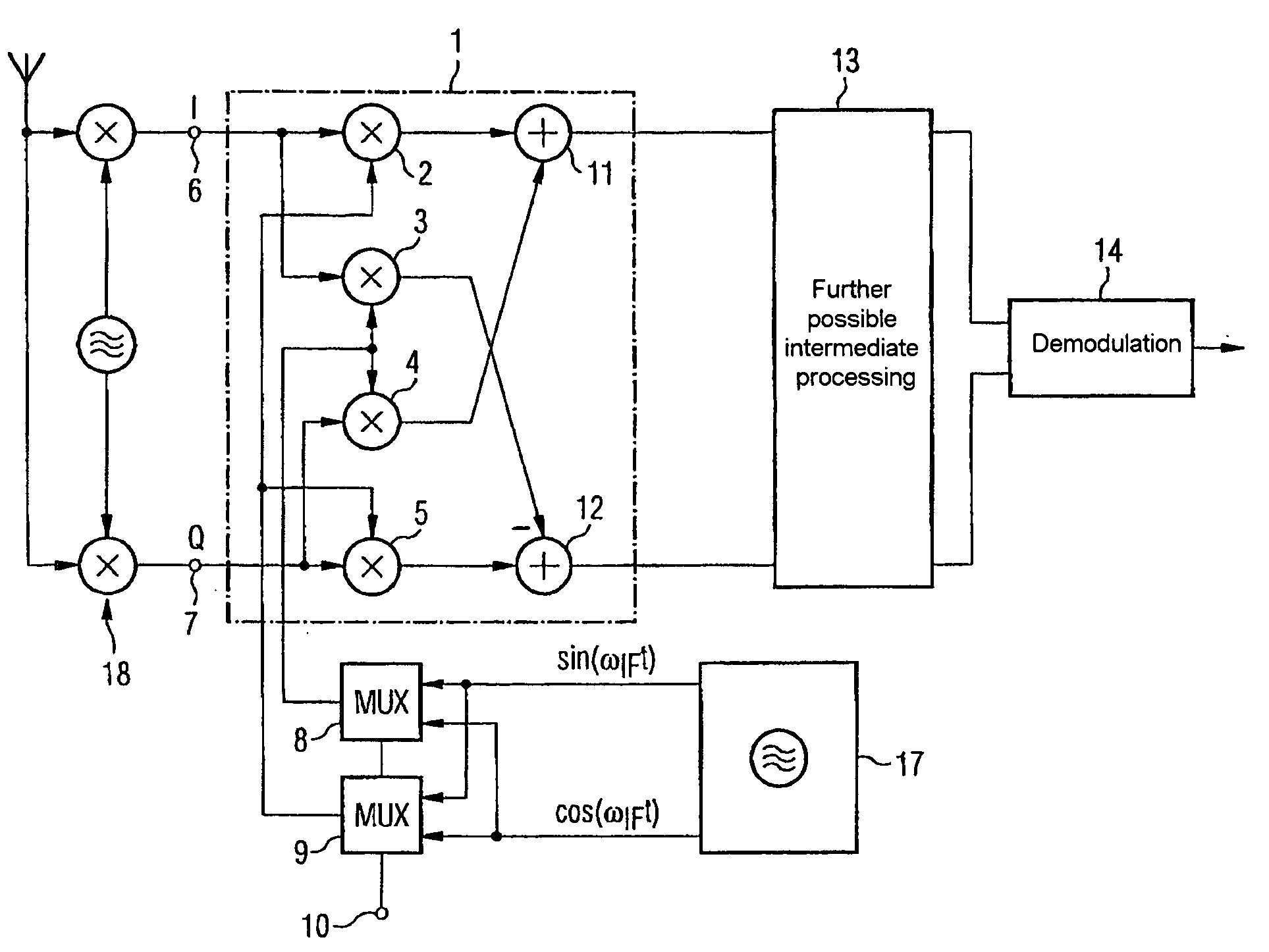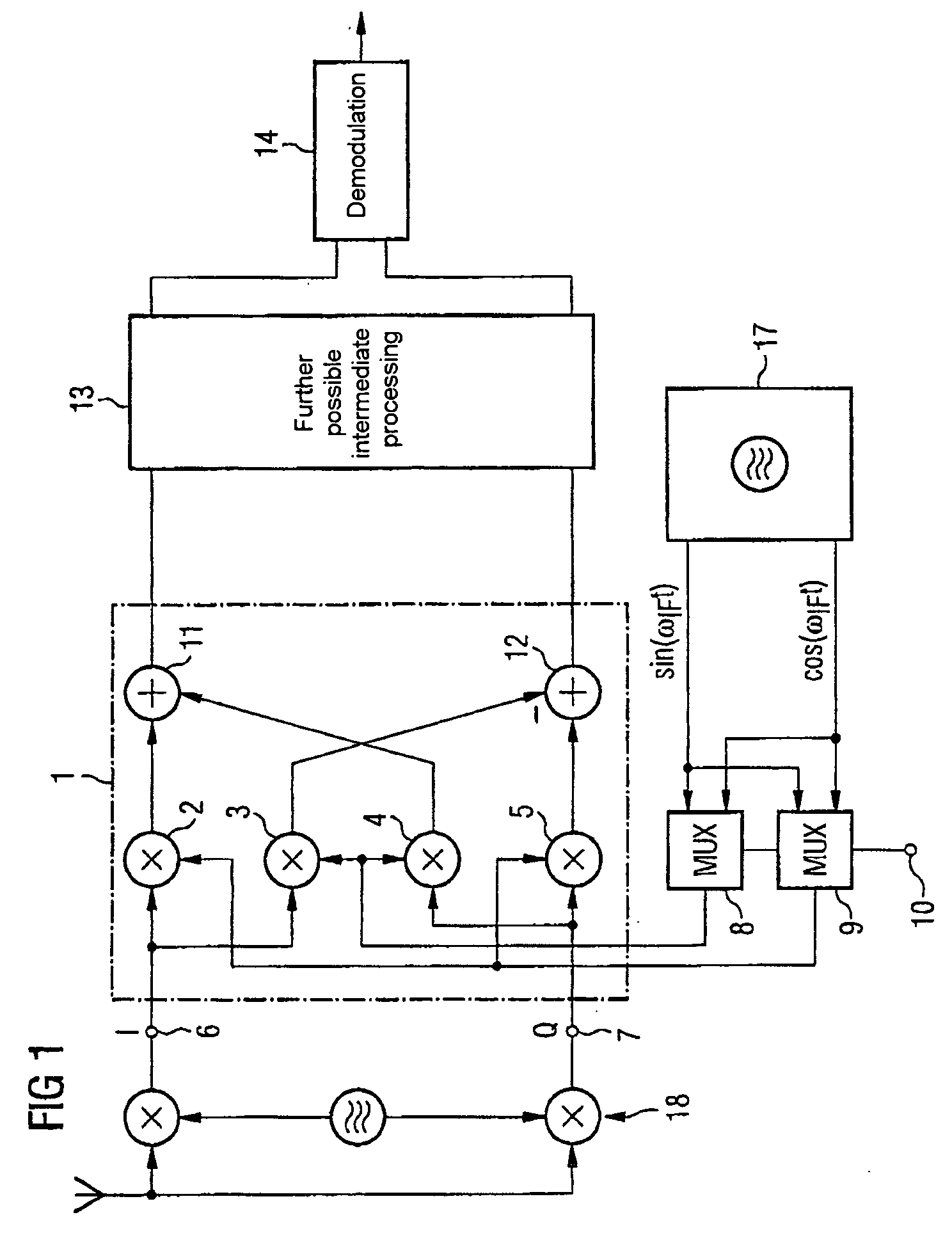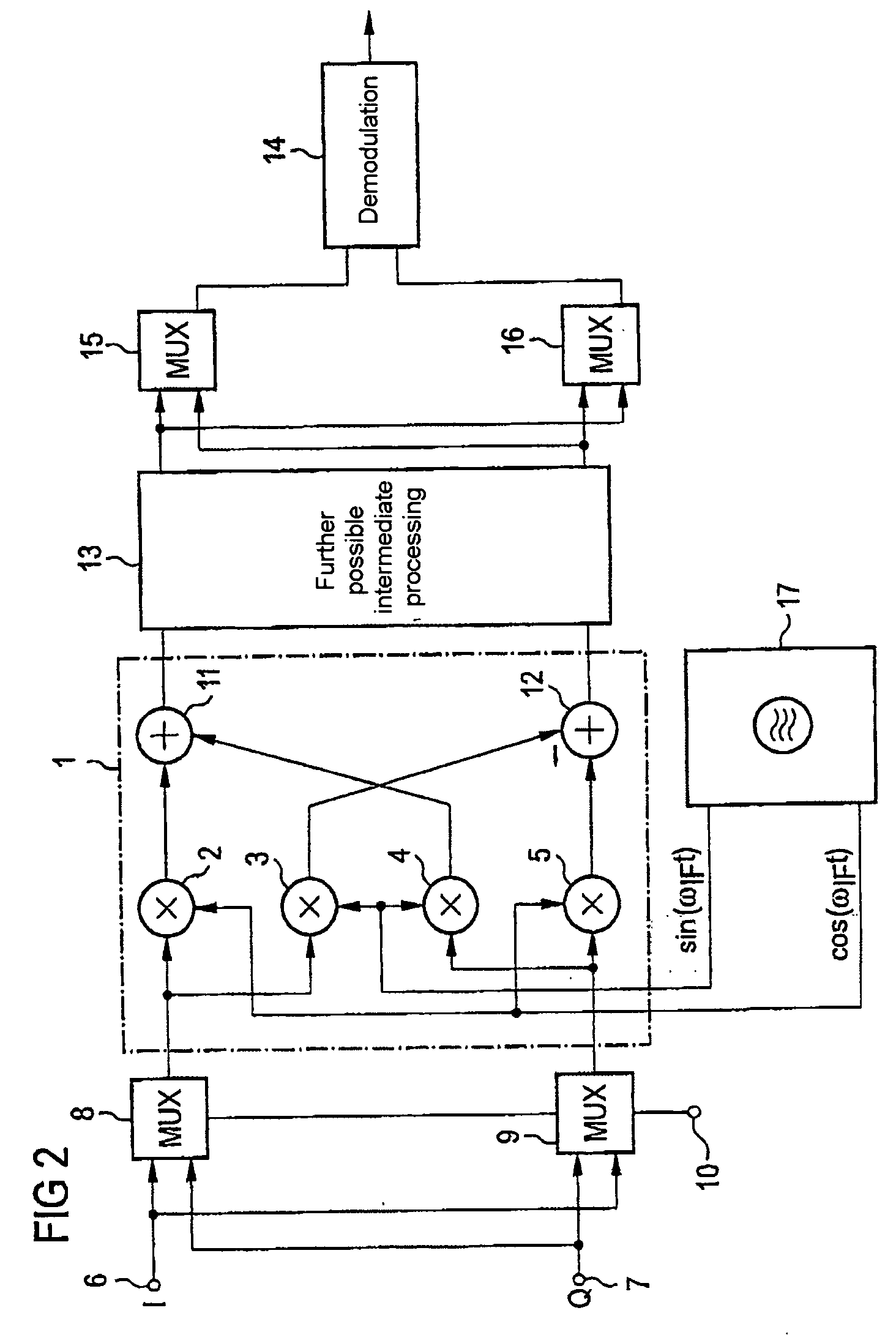Mobile radio receiver device
- Summary
- Abstract
- Description
- Claims
- Application Information
AI Technical Summary
Benefits of technology
Problems solved by technology
Method used
Image
Examples
Embodiment Construction
[0028]FIG. 1 shows a receiver arrangement with a down-conversion frequency mixer 1 which is designed to down-convert a useful signal, which is available as a complex-value signal, from an intermediate-frequency level to baseband. In this case, the complex-value signal is a signal that is split into an in-phase component and a quadrature component that is orthogonal thereto. Such frequency mixers 1 designed for complex-value signal processing are also called IQ mixers. The present down-conversion frequency mixer 1 comprises four mixer cells 2 to 5 which each have two inputs and one output, and which each provides a multiplied signal. The first input of the first mixer cell 2 is connected to the in-phase input 6 of the frequency mixer 1, as is the first input of the second mixer cell 3. The first inputs of the third and fourth mixer cells 4, 5 are connected to the quadrature input 7 of the down-conversion frequency mixer 1.
[0029] The second inputs of the mixer cells 2 to 5 are suppli...
PUM
 Login to View More
Login to View More Abstract
Description
Claims
Application Information
 Login to View More
Login to View More - R&D
- Intellectual Property
- Life Sciences
- Materials
- Tech Scout
- Unparalleled Data Quality
- Higher Quality Content
- 60% Fewer Hallucinations
Browse by: Latest US Patents, China's latest patents, Technical Efficacy Thesaurus, Application Domain, Technology Topic, Popular Technical Reports.
© 2025 PatSnap. All rights reserved.Legal|Privacy policy|Modern Slavery Act Transparency Statement|Sitemap|About US| Contact US: help@patsnap.com



